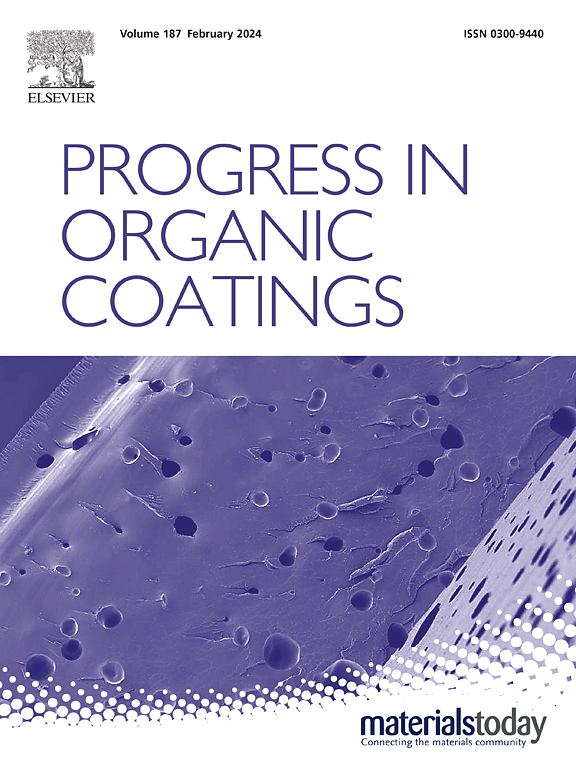Epoxy-acrylate/nano-SiO2 hybrid formulations for optoelectronic coatings
IF 6.5
2区 材料科学
Q1 CHEMISTRY, APPLIED
引用次数: 0
Abstract
Hybrid organic-inorganic materials have gained increasing attention from researchers due to their environmental benefits and wide application potential. In this study, a novel method for fabricating UV-curable and bifunctional epoxy acrylates (EA) – silica hybrid coatings was developed, utilizing surface-modified nanoparticles with sizes ranging from 12 to 18 nm as fillers. Three types of EA monomer were synthesized using conventional methods. The inorganic phase of silica was obtained in the presence of polyacrylic acid, which served as a surfactant, and subsequently modified with 3-(trimethoxysilyl)propyl acrylate before being introduced into the monomer dispersion. The impact of SiO2 nanoparticles on the rheology of the final coating precursor was examined, demonstrating the capacity to alter the viscosity of the formulation from several mPa·s to over 10 Pa·s, as well as to modify the refractive index (RI) from 1.43 to 1.55.
The composite materials synthesized in the visible range (400–800 nm) exhibited a transmittance of over 96 % following exposure to UV radiation (350–390 nm) and thermal curing at temperatures below 100 °C. The resulting materials demonstrate excellent heat resistance up to 200 °C and adhesive ability. The surfaces of the hybrid coatings were examined using scanning electron microscopy (SEM), which revealed a smooth surface devoid of any microcracks. The potential of using the composite as a photoresist for organic optoelectronic systems was demonstrated. This class of transparent photomaterials can be employed in photoconversion microstructures based on QDs, which are widely used in QLED displays, as well as in sealing coatings for photovoltaic organic devices.

求助全文
约1分钟内获得全文
求助全文
来源期刊

Progress in Organic Coatings
工程技术-材料科学:膜
CiteScore
11.40
自引率
15.20%
发文量
577
审稿时长
48 days
期刊介绍:
The aim of this international journal is to analyse and publicise the progress and current state of knowledge in the field of organic coatings and related materials. The Editors and the Editorial Board members will solicit both review and research papers from academic and industrial scientists who are actively engaged in research and development or, in the case of review papers, have extensive experience in the subject to be reviewed. Unsolicited manuscripts will be accepted if they meet the journal''s requirements. The journal publishes papers dealing with such subjects as:
• Chemical, physical and technological properties of organic coatings and related materials
• Problems and methods of preparation, manufacture and application of these materials
• Performance, testing and analysis.
 求助内容:
求助内容: 应助结果提醒方式:
应助结果提醒方式:


